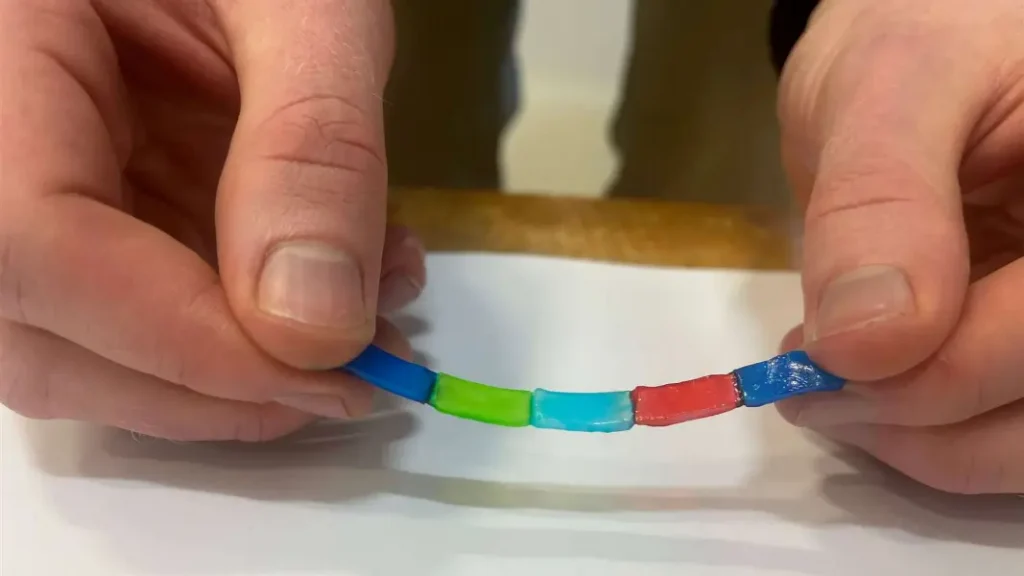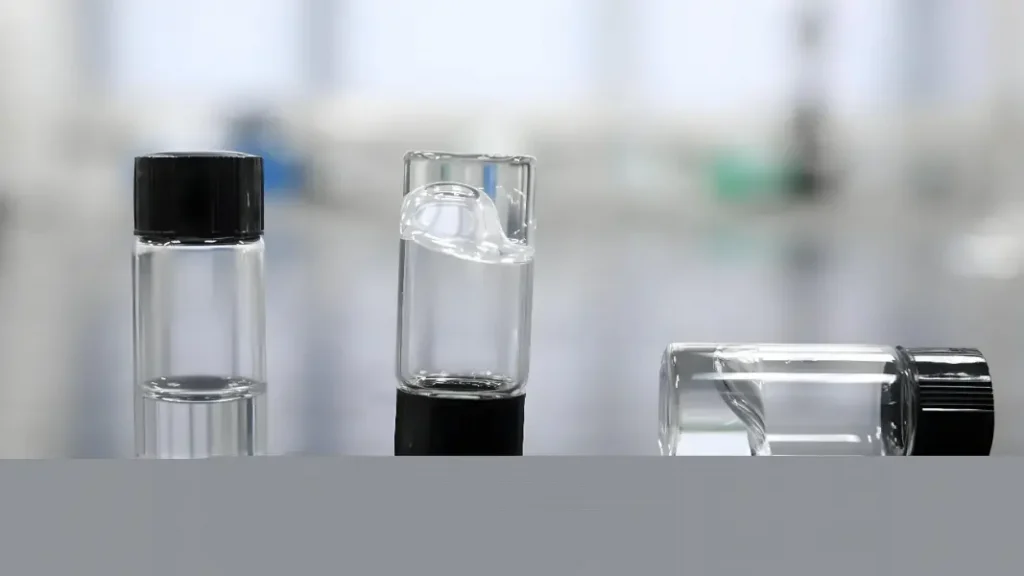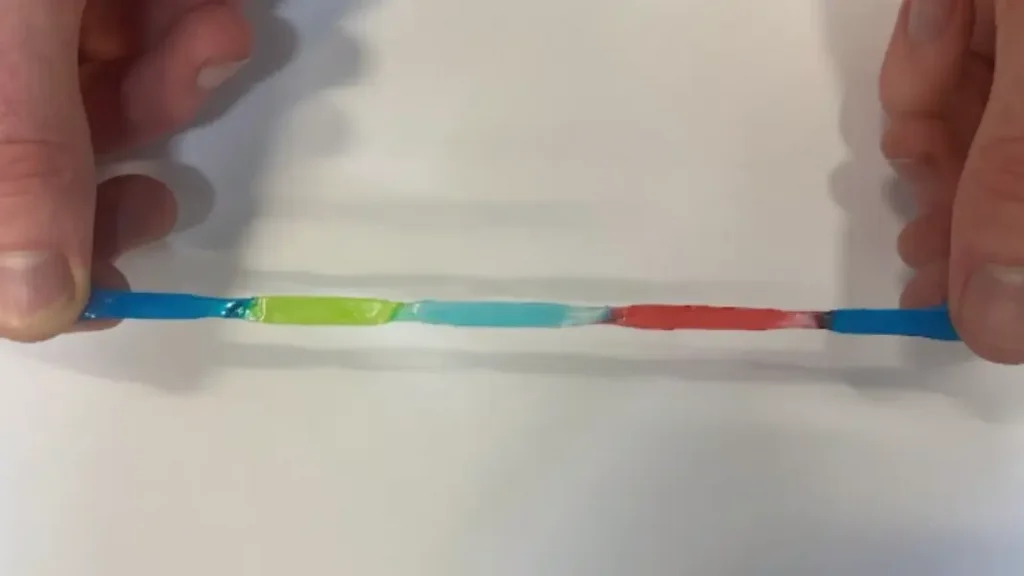- Jelly batteries are self-repairing, jelly-like and can be stretched to more than 10 times their original length without affecting their conductivity.
- Jelly batteries could be used in wearable devices or soft robots, and could also be implanted in the brain to deliver drugs or treat diseases such as epilepsy.
- The development of jelly batteries presents a number of challenges, including the necessity for biocompatibility testing and the development of efficient production scaling.
OUR TAKE
Jelly batteries, which were inspired by the electric eel’s ability to generate power, introduce a flexible, self-healing energy solution. These hydrogel-based batteries can stretch without losing conductivity, which makes them perfect for wearables, medical implants, and robotics. The researchers from the University of Cambridge and Guilin University of Technology are at the forefront of this field, working towards commercial use with their promising safety profiles and robust performance. It looks like this blend of biological compatibility and technological advancement could soon create more convenient and reliable device integrations, particularly in medical settings.
–Heidi Luo, BTW reporter
Introduction to jelly batteries
Just picture a world where your wearable device never causes any discomfort, and your medical implant is designed to move with your body. As we all know, traditional batteries, with their rigid structures, often put a cap on what we can do in such technologies. Fortunately, jelly batteries offer a promising solution with their flexibility and adaptability.
Nature is often the source of technological breakthroughs. The idea behind jelly batteries actually comes from an unlikely source: the electric eel. This aquatic creature generates electricity through cells called electrocytes to stun prey or defend itself.
By copying this natural process, researchers have created batteries using hydrogels that work in a similar way to the eel. The latest research from the University of Cambridge has made some big advances in jelly battery technology. They’ve used hydrogels made from layered organic polymers that contain over 60% water, which allows these materials to conduct electricity really effectively.

By using these hydrogels, they’ve created batteries that bend and stretch and even heal themselves. This makes it more comfortable to wear against the skin and more robust when implanted into internal organs, like the lung, heart, or brain, according to the report from “The Economist”.
Whereas most batteries experience a loss of conductivity if the material they are made from is bent or stretched, a jelly battery can be stretched up to one-and-a-half times its length with no voltage loss.
Stephen O’Neill, a member of the Cambridge research team.
A second group at Guilin university of technology, along with other research centers in China, has been working on a self-healing hydrogel battery. Their research, which was recently published in Nano research energy, shows that their battery can handle a lot of bending and twisting. The group also found that the battery is still self-healing even after being broken ten times, which shows it’s really robust and could be really durable in practical applications.
Also read: NTT invention brings 3D images to life without special tools
Pop Quiz
What unique ability of the electric eel inspired the design of jelly batteries?
A) Its ability to swim backward
B) Its ability to generate electricity
C) Its ability to live in both fresh and saltwater
D) Its ability to glow in the dark
The correct answer is at the bottom of the article.
Development of jelly batteries
Svolt Energy Technology Company, a leader in the battery industry, first shared the idea of jelly batteries at the first battery day event on December 2, 2020, in Wuxi, China. The jelly battery is a lithium battery that uses a new gel-like electrolyte. It can heal itself and doesn’t catch fire. This battery performs just as well as traditional liquid electrolyte batteries, but it also prevents thermal diffusion and keeps its stability even when it’s under physical stress.
In the company’s tests, the jelly battery showed important safety improvements over conventional batteries. It passed a thermal box test at 150°C, proving it can withstand pressure and keep working even when it gets hot. These features are great for electric vehicles because they can handle extreme heat and work well in any conditions. This makes the technology safer and more useful for electric vehicles.

This past July 4th, Svolt Energy Technology showed off its second-generation Jelly battery at the Global Partner Summit. VP Zhang Fangnan talked up the battery’s high energy density and rapid charging capabilities, and announced plans to start mass production in February 2026.
Also read: AI-powered breakthrough: Microsoft’s revolutionary battery
Meanwhile, in July 2024, the University of Cambridge has achieved significant advancements in the field of jelly battery technology. The new jelly battery developed by the university can heal itself, it’s gel-like, and it can stretch more than ten times its original length without losing conductivity, according to Sci-Tech daily’ report.
Features and benefits
What makes jelly batteries special is their innovative design. They offer a suite of unique properties that address many of the limitations of traditional batteries. Firstly, they can be bent and stretched, which makes them perfect for wearable tech and medical implants that need to move with the body. This adaptability means users won’t have to worry about discomfort and devices powered by these batteries will be more reliable
“The mechanical properties of the hydrogel can be tailored to align with those of human tissue,” said team leader Oren Scherman. “Hydrogel implants are less likely to be rejected by the body or cause scar tissue buildup because they do not contain rigid components such as metals.”
On top of being flexible, hydrogels are really tough. They can take a lot of pressure without getting damaged and can even repair themselves if they get broken. Besides, jelly batteries can heal themselves. These batteries are made from hydrogels, which means they have strong molecular bonds that can realign and repair themselves if they’re damaged.
Another feature of the jelly battery is that the strong molecular bonds that allow the polymers to stretch also allow the material to repair itself very quickly if it is broken.
Jade McCune, a member of the Cambridge team.
This not only makes the battery last longer but also reduces maintenance needs and overall costs. Plus, the potential for wireless charging could make it even easier to integrate them into various devices, which would make them even more versatile and user-friendly.

Applications
Jelly batteries are revolutionizing many fields with their unique flexibility and self-healing properties. Their ability to stretch and conform to complex shapes makes them particularly suitable for wearable and implantable devices. These batteries enhance the functionality and comfort of health monitoring devices, such as skin patches that monitor various medical conditions and smartwatches that continuously track health metrics without the discomfort associated with traditional rigid batteries.
In medical technology, jelly batteries are not limited to external devices, but also have significant potential for internal applications. They can be implanted in the body to power devices such as brain-computer interfaces, which could be used to control electronic prosthetics, or to deliver drugs directly to treat conditions such as epilepsy. Their ability to blend and move with body tissues reduces the risk of irritation and increases safety and comfort for patien
In addition to medical and personal use, jelly batteries hold promise for applications in soft robotics. Their flexibility allows robots to perform delicate tasks and operate safely around humans, making them ideal for integration into advanced prosthetic devices, such as gloves that help stroke victims regain movement in their hands. This application is particularly promising as it pushes the boundaries of what is possible with robotic prosthetics, offering users improved mobility and quality of life.
Challenges and future prospects
Jelly batteries have a lot going for them, but there are still a few hurdles to overcome. One big issue is whether these batteries are safe for use in medical implants. It’s really important to make sure that the materials don’t cause any problems when they’re implanted in the human body.
Therefore, we need to do a lot more testing in real-world settings to get a good understanding of how safe they are. Another issue is scaling up production without losing quality or performance. As these batteries move towards becoming a commercial product, it’ll be really important to develop cost-effective ways of making them on a large scale.
Most importantly, the potential for wireless charging and further enhancements in self-healing capabilities represent promising subject areas for future research. Further enhancements in these areas could make jelly batteries even more versatile and appealing for a broader range of applications.
In short, jelly batteries could be a game-changer in the tech world, especially when it comes to wearable and implantable devices. Their flexibility, self-healing properties, and potential for biocompatibility make them an innovative solution that could lead to more reliable and comfortable devices.
As research continues and these batteries are refined and tested, we could see a new era in how devices are powered, offering greater integration and interaction with the human body and environment.
Correct answer: B. Its ability to generate electricity

